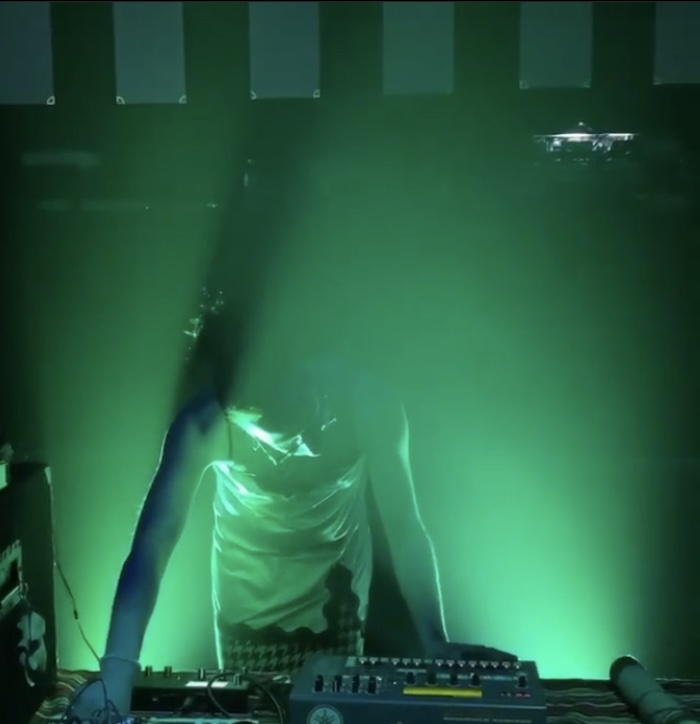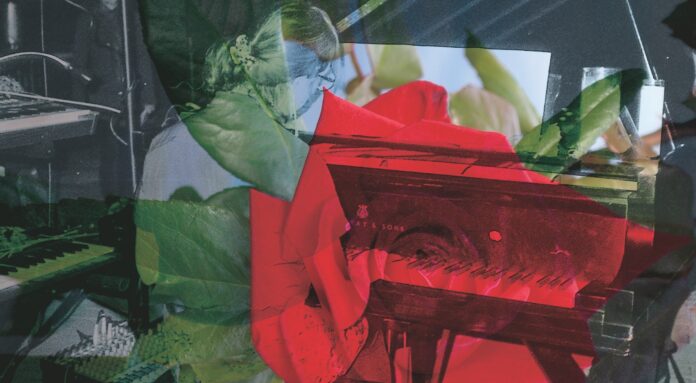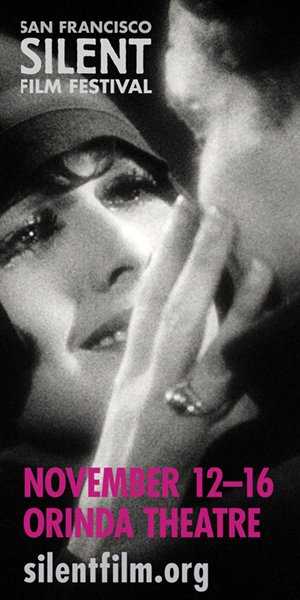It’s been nine years since Oakland’s Ghost Ship tragedy draped the Bay Area nightlife scene in panic and grief, pushing a small underground community into the national spotlight—and closer together. For many who lost friends and family in the fire, the trauma is still fresh, compounded by what came after: the right-wing attacks, the gentrification of arts and nightlife spaces, the withering of political support, lingering physical effects on survivors, and the overall precariousness of living in the Bay Area as an artist, musician, and general cool person.
Yet the Bay Area is still making great art, and the underground nightlife scene is surviving, even thriving in some aspects, despite the lingering pain. One of the lasting inspirational elements to emerge in the wake of the horror was the Vital Arts Foundation, started by Edwin Bernbaum, whose son Jonathan died in the fire, as an arts-forward, community-supporting counterpoint to the punitive legal and carceral focus that was overtaking the tragedy, as lawsuits and investigations unfolded.
To mark the Ghost Ship fire’s tenth anniversary in 2026 and commemorate the 36 lives that were lost, Vital Arts has commissioned avant-garde composer Alexandrea Archuleta’s Symphony No. 1: …And no one died, thus we began to see in the Dark. The work in full will be performed December 4, 2026, at Grace Cathedral, but “Art in Movements,” a preview of the symphony-in-progress will take place alongside a performance by dance group RUPTURE on Sat/13 at Bandaloop Studios, Oakland.
“I lost 13 friends that night,” said Vital Arts Executive Director Sharmi Basu, who also records as Beast Nest. “I was supposed to go to the party there later, but I got a message from [survivor] Russell E.L. Butler saying, ‘don’t come, there’s a fire.’ Aja [Alexandrea] and I lived together at that time, and she and one of our now-board members Nihar Bhatt had left the Ghost Ship party earlier and were at home when I got there. We just stayed up all night trying to figure out what was happening.
“We were such a tight-knit community, where most of us knew each other so well and were involved in each others’ art,” Basu said. “I was the last person to professionally record Joey Casio. I lost my ex, who I used to live with. Our projects were all related. The next two or three years were spent navigating this intense grief and loss. But working with Vital Arts and reconnecting with families and survivors in a more organizational way helped put a different perspective on some things. It’s been a trip.”
Basu underlined how Vital Arts addresses the material challenges of surviving as a marginalized creator in the Bay Area: Who are the underground artists that are neither protected nor supported infrastructurally by the arts industry here, and how can these artists create a more safe and affordable community for themselves? Where can they live?
Along with compiling an essential list of resources and launching the Artist Legal Cafe which provides financial training and legal advice, Vital Arts initiatives recently undertook The Bay Area Artist Census (BAAC), a unique data gathering project, platform for artists, and valuable fellowship, which aims to “foster fiscal literacy, political education, resource building, coalition development, data sovereignty, and advocacy.” (A report on BAAC will be shared at Saturday’s event.)
Supporting Archuleta’s work is a great example of Vital Arts’ mission. “Aja is my sister. I saw her open for William Basinski at Grace Cathedral in 2022 and was really moved. She’s done so much in the Bay Area, and there’s so little materially documented and archived around it. I’m now a part of this organization that can help make that happen, so let’s make it happen,” Basu said.
Help us save local journalism!
Every tax-deductible donation helps us grow to cover the issues that mean the most to our community. Become a 48 Hills Hero and support the only daily progressive news source in the Bay Area.

Archuleta, a Two-Spirit Mestiza who performs live and DJs as Piano Rain, is a fabulous staple of the underground nightlife and arts community in the Bay Area and beyond. (One of the highlights of my year is always running into her working the door of the No Way Back weekend-long rave at Detroit’s Movement techno festival.) She’s since relocated to Denver, but her poetic compositions still echo with Bay Area underground aesthetics.
For Symphony No. 1, performed by the Ghost Ship Symphony ensemble, she took inspiration for Bay Area spirit Terry Riley—a performance of whose still-exhilarating “In C” she once lead—and his experimental-minimalist Mills College milieu, as well as cutting-edge experimental artists like Unica Zürn and Hermann Nitsch, the wide-screen soundtracks of Ennio Morricone like The Mission (which she first experienced being played by Polyglamorous DJ Mark O’Brien at an underground queer party), and more elegiac influences.
“I like to think of [Symphony No. 1] as being in that canon of grief symphonies or works around death, like Arvo Pärt’s In Memorium of Benjamin Britten, which is directly about fellow composer Benjamin Britten and his passing,” Archuleta said. “Górecki’s Symphony of Sorrowful Songs changed my life. I gravitated toward experimental and cathartic, heavy symphonies, odes, memoriams. Then adding electronics and synthesizers, oscillators mixed with classical instruments. Noising and punking the classical cannon, basically.”
Her electronic music knowledge helped her plot out the music in a spatial sense: “Knowing that Grace Cathedral has a 12-second reverb because it’s such a long space, I worked with that in mind, pushing the strings to their full distortion. No one breaks a string, but they’re forced to play to full intensity, which leads to such a hugely expressive sound.”
The shape of the piece expands the Ghost Ship metaphor itself. “The first part is a fanfare with horns, like a ship departing,” Archuleta said. “And throughout, I’m directly referencing all the poetic imagery of this disaster and how I reflect on it in the daily way. I wrote a lot of gothic poetry after that time. I used to be obsessed with the Titanic, which is another ship disaster. [Titanic survivor and womens’ rights activist] Molly Brown was born on my birthday, and I’ve always been very into her story.”
Symphony No. 1 also reflects related queer nightlife tragedies like those of Pulse in Orlando and Club Q in Colorado Springs, Archuleta’s experiences meeting many of the Ghost Ship victim’s families, and the task of rebuilding a shattered communal scene. “We’ve all had to improvise and reimagine what a grieving space could look like together, including early memorial anniversary parties that I hosted, which just felt like they had to happen. It was all queer and trans artists all night. We packed the space, we made pancakes at sunrise. There was quiet music, loud music.”
Basu added, “Ghost Ship really, I think, altered the internal hormonal chemistry of our entire community. My brain works so differently now. I think that there was a skill level around grief, care, and mental health that I really didn’t have at the time, and have been working really hard to continue to build upon. Music is a huge part of that.
“As a sound nerd, in the workshops that I do, I talk about how people are transducers,” Basu continued. “We process different types of energy, one to another. That’s what a microphone is. It’s what a speaker is. It takes electrical energy and turns it into acoustic energy, and acoustic energy into electrical energy. What we’re doing is changing our chemical energy into acoustic energy or electrical energy—emotions, thoughts, and sound, the kinetic energy that connects us all.”
Archuleta said, “The reason this symphony is coming to fruition is through the magic of the community. Every single moving part of this, from the program printing and flowers, to the sound installation and door girl, to the press coverage and support of Vital Arts, there’s someone in our community with that specific superpower who is involved. It’s such a punk rock DIY underground Bay Area rainbow connection.
“Anything is possible because of everyone that I’ve met in my life. I love that. I think that really says something.”
ART IN MOVEMENTS: A COMMUNITY GATHERING WITH THE GHOST SHIP SYMPHONY AND RUPTURE Sat/15, 7pm, Bandaloop Studios, Oakland. Tickets and more info here.





